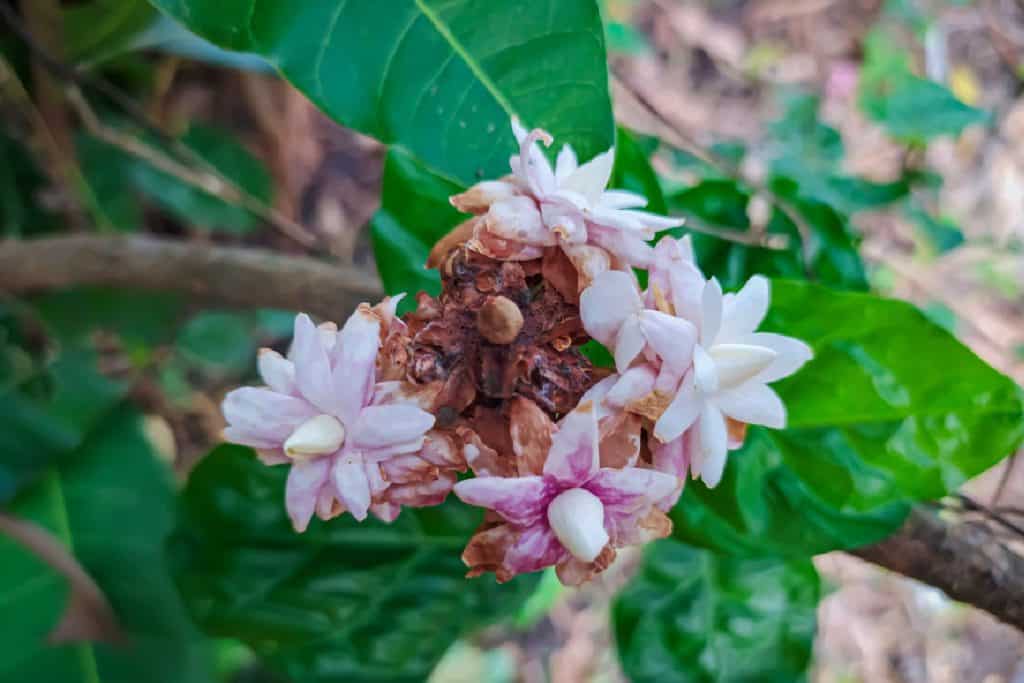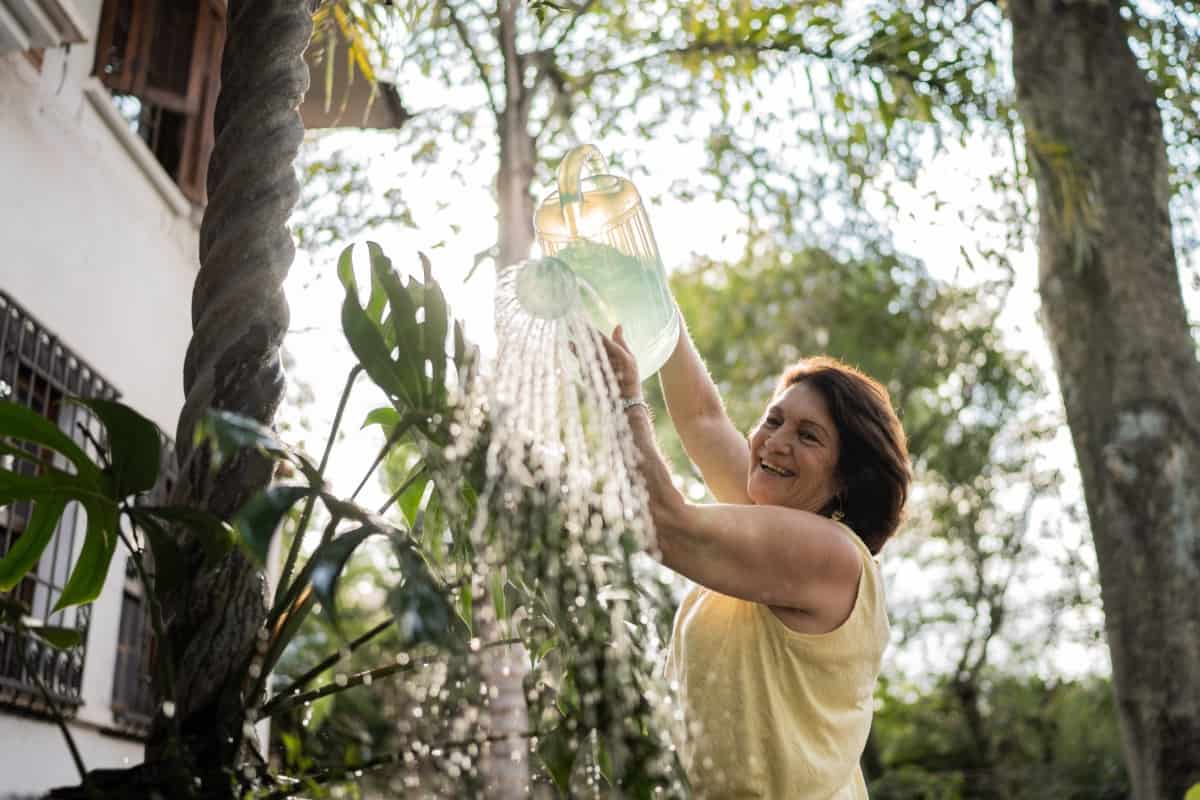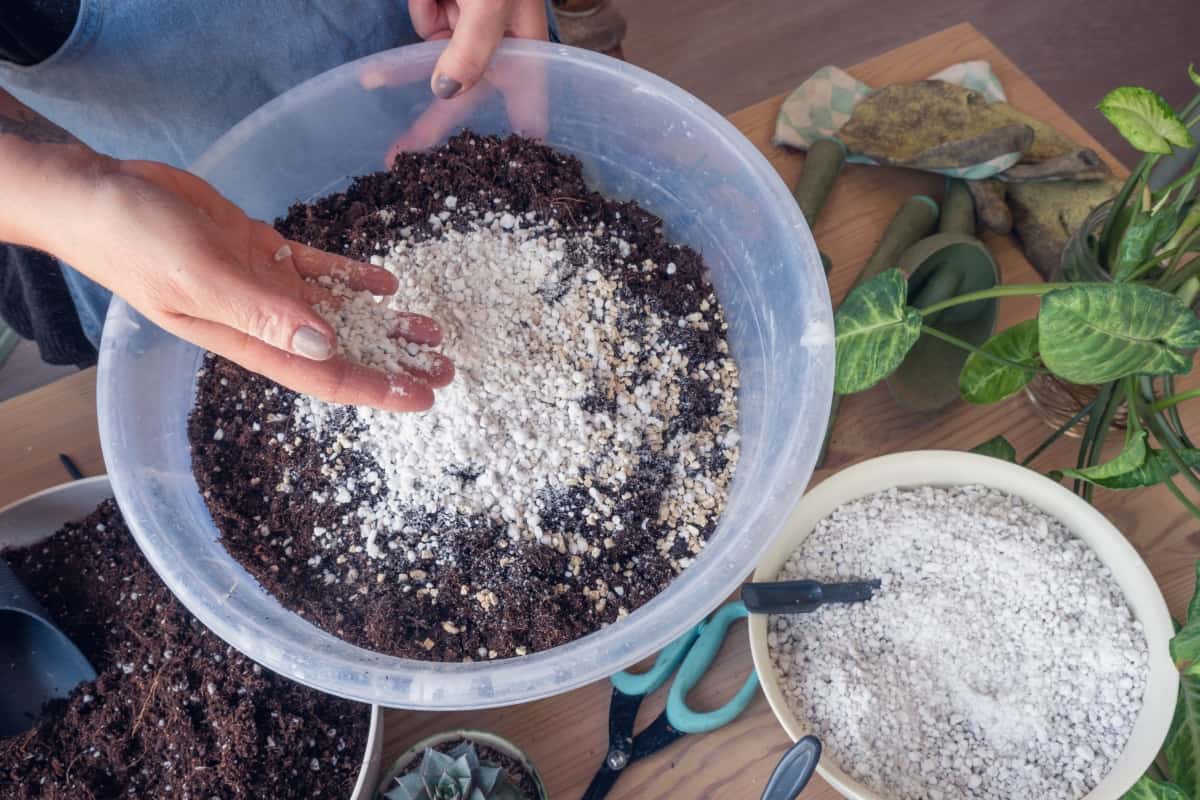Night-blooming jasmines are fragrant plants that are easy to maintain as long as they are in the appropriate conditions. If these conditions remain unmet, they can seriously threaten the plant's life. So, we're here to assist if you have sick/dying jasmine.
Here are possible reasons why your night-blooming jasmine is dying:
- Wrong watering frequency
- Wrong soil mixture
The appropriate watering schedule for young night-blooming jasmine is 2-3 times a week and at least once a week after full root integration.
If your plant is dying, reduce or increase the watering frequency depending on the current amount of water in the soil. We recommend keeping the ground near night-blooming jasmine, somewhat moist but not soggy.
Like many other houseplants, a night-blooming jasmine plant is low-maintenance, and its most basic needs are sufficient sunlight and water.
Continue reading as we discuss tips and tricks on taking care of your plant and other essential information you will need to avoid your night-blooming jasmine from dying.
![Bad hoopoe for indoor plants, lack of watering - Why Is My Night-Blooming Jasmine Dying [And What To Do]](https://gardentabs.com/wp-content/uploads/2022/08/Bad-hoopoe-for-indoor-plants-lack-of-watering-Why-Is-My-Night-Blooming-Jasmine-Dying-And-What-To-Do-2.jpg)
What Can Cause A Night-Blooming Jasmine To Wither?
Night-blooming jasmine, also known as 'Lady of the Night,' is a tropical plant native to the West Indies and naturalized in South Asia. The flower is best known for its strong fragrance while blooming in the evening during summer.
Among other tropical plants, the night-blooming jasmine is common in many home gardens due to being low maintenance.
To thrive, you must provide the proper living condition for the plant.
Prolonged exposure to situations going adversely against this could negatively, and even terminally, damage night-blooming jasmine. Below is the list of reasons that can explain a withering or dying night-blooming jasmine plant.

Wrong Watering Frequency
You must water young night-blooming jasmines at least 2-3 times a week until they fully integrate their roots into the soil. After this, you should only water them once a week, and even less during winter when they have become dormant.
Night-blooming jasmines do not need their soil to be saturated in water, although the ground has to stay moist. Even if the plant is not too sensitive to immediately wither, frequent watering or lack thereof can cause the plant to die.
Overwatering

Night-blooming jasmines thrive in regions under zones 9-11 which experiences warm temperature even during the winter months.
The higher humidity level in the atmosphere allows plants native or naturalized in these areas to not require much watering.
If you have been watering your night-blooming jasmine 2-3 times a week even after it has been established, it could be why the plant is dying.
Plants need water for photosynthesis, but it is important to note that too much watering is counterproductive. Night-blooming jasmines, much like any other plant, need just enough water to allow them to absorb nutrients in the soil.
Too much water in the ground will cause harmful bacteria to populate the soil, ultimately damaging the roots and killing the plant.
Below is a list of common overwatering symptoms:
- The bottom foliage appears yellow or yellow-green
- New leaves are brown at the tip
- Curling leaves
- There is a swampy, slightly sulphuric smell coming from the soil
- The plant has completely stopped growing

Another indication that the night-blooming jasmine is overwatered is if watering does not revive the plant. Any symptoms above paired with musty-smelling soil means the plant is dead.
At this point, the roots are decomposing; brown or black roots are a clear sign of rot. During this stage, the plant and the soil should be disposed of properly.
Underwatering
Just like overwatering, underwatering can pose a serious threat to night-blooming jasmine. The plant needs water to absorb nutrients in the soil and assist the photosynthesis process, so the lack of it will hinder growth.
As discussed above, water the plant 2-3 times while establishing the roots, and then keep watering it weekly except during its dormant season.
It can be pretty tricky figuring out whether overwatering or underwatering was the issue because their symptoms look similar at first glance.
Inspect the plant's situation thoroughly to determine if you need to add or reduce the watering frequency.
Below is a list of common underwatering symptoms:
- Leaves are turning yellow or brown
- Leaves have dropped
- Leaves are thin and crack under slight pressure
- Plant soil is dry to the touch
- The plant had very little growth
Underwatered plants can still be revived unless the plant has completely dried up.
If your night-blooming jasmine displays any of the symptoms above with no foul smell from the soil, then all you have to do is increase the watering frequency.
Make sure that the soil drains well to avoid accidentally overwatering.
Wrong Soil Mixture

Even with proper watering, waterlogging and root rot can still occur if you have planted the night-blooming jasmine in lousy soil. Night-blooming jasmines require fertile, well-drained soil that will allow the roots to have a healthy balance of water and oxygen.
When looking for soil to plant your night-blooming jasmine in, select one with enough sand and clay in its composition. The sand will provide enough space for excess water to drain, and the clay will deliver all the essential nutrients your plant needs.
You can plant it in sandy loam soil with the appropriate sand and clay ratio and then mix it with other organic materials. Ensure the ground has a pH level of around 5.5 to 6.5 to give the plant enough soluble nutrients to absorb.
If you plan to relocate the night-blooming jasmine from pot to ground, allow at least 5-6 feet of distance between the plant and its neighbor. Night-blooming jasmine needs this space to allow the roots spread out and establish, especially if you are planting it around other night-blooming jasmine.
How Much Sun Does A Night-Blooming Jasmine Need?
Night-blooming jasmines thrive best in places with constant sunlight, warm temperatures, and rare frosts. It is recommended to place the plant in areas where it can receive at least 6 hours of direct sunlight each day.
If you have planted night-blooming jasmine in a region that experiences cold temperatures with little to no sunlight for months, this could also be a reason for the plant's death.
You can choose to relocate the plant inside your home instead. Ensure to sustain an indoor average temperature of 45°F while keeping the plant away from heating vents to prevent dehydration.
There is no need to increase the watering frequency when keeping night-blooming jasmine indoors, and it should even be lessened during the winter when the plant is dormant.
However, extra care to maintain the plant's soil moisture should be provided if there is a significant decrease in the humidity inside the house.
You can spray the topsoil when it feels dry to the touch. You can also place the pot in a humidity tray to prevent dehydration.
Below are steps you can follow to create your humidity tray at home:
- Choose a tray or basin that is wide and hollow enough to hold in the plant pot.
- Put at least 2-3 inches thick of pebbles, small stones, or landscaping gravel to fill the bottom of the container. Place it evenly to create a flat surface for the pot to sit and balance.
- Fill the container with water about 1/2 of the solid material layer. Do not allow the water level to be higher than the solid materials, and ensure that the top is dry for the pot to sit in.
- Carefully sit the pot inside the container. Do not relocate the pot near an air vent or a heater.
Do Night-Blooming Jasmines Attract Pests?
Night-blooming jasmine is toxic for humans and animals, but insects and pests still prefer to feed on the plant. Common garden pests like aphids and caterpillars consume the plant's leaves and destroy the flower buds before they bloom.
If the plant has been neglected for a long time, the infestation can worsen and eventually kill it.
To remove any insects and pests hiding behind the plant's foliage, give the plant a water shower to wash away the harmful creatures.
Choose a strong but not too harsh setting on a garden hose and spray around the plant, giving additional attention under the leaves where aphids usually multiply.
You can also decide to clean the plant with diluted dishwashing soap or an organic pesticide.
To Finish
Night-blooming jasmines do not require much attention and will thrive with sufficient warmth and water. If your night-blooming jasmine is withering, you might have the wrong watering frequency or soil mixture for it.
If you found this article helpful, here are some related articles:
7 Fragrant Indoor Plants That Thrive in Low Light
Shrubs For Pots In Full Sun [17 Great Ideas For Your Landscaping]
![Why Is My Night-Blooming Jasmine Dying? [And What To Do]](https://gardentabs.com/wp-content/uploads/2023/12/Why-Is-My-Night-Blooming-Jasmine-Dying-And-What-To-Do.jpg)
